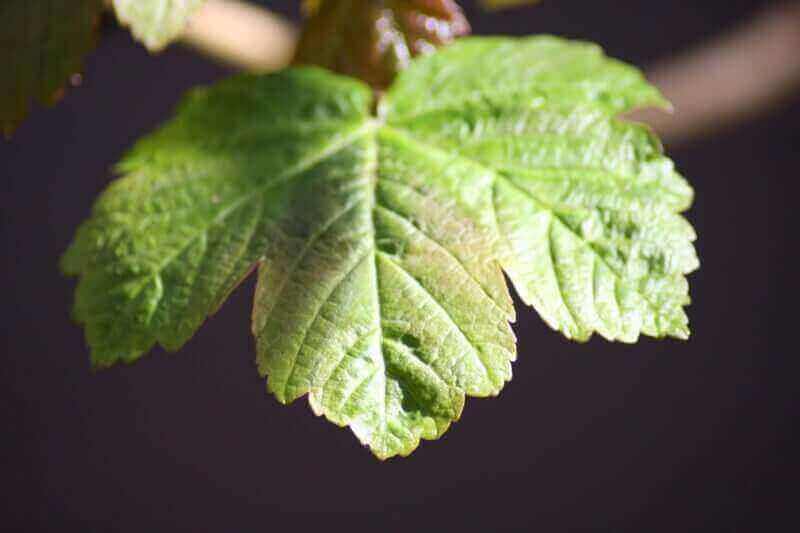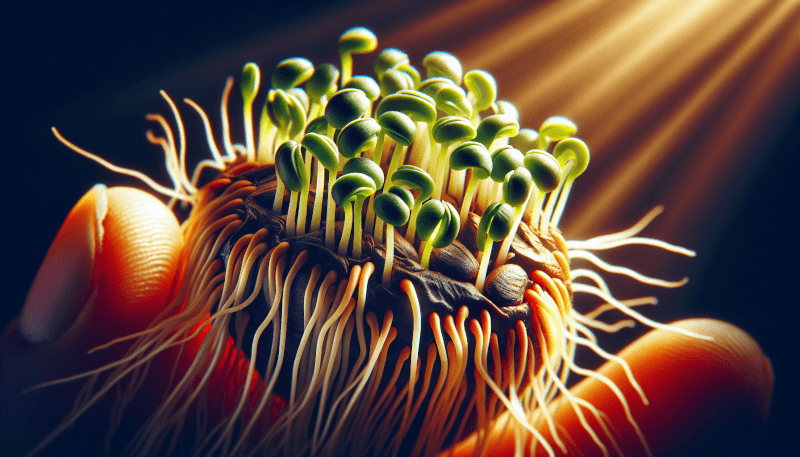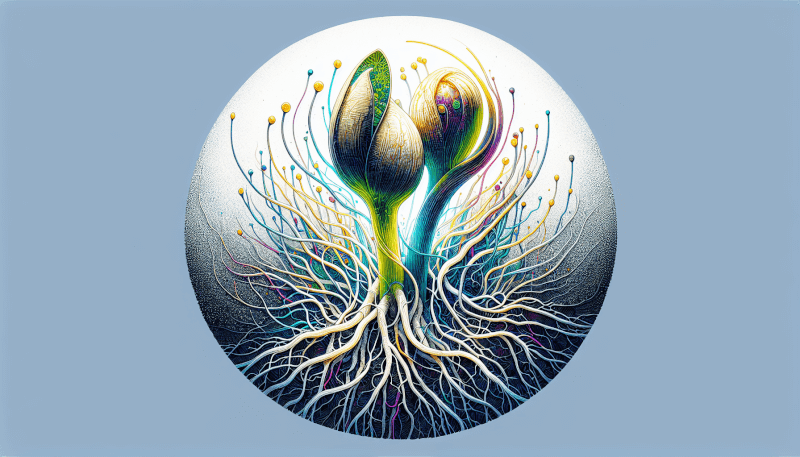👋 Click the mic button to talk to Alfred, the Todd's Seeds Gardening/Sprouting Expert – Feel free to ask him anything!
Ask Virtual Todd Anything - Click the Mic
Have you ever wondered what exactly happens when a seed starts to grow into a plant? It’s called germination, the magical process where a dormant seed comes to life and sprouts into a new plant. In this article, we will explore the definition of germinating seeds and unravel the fascinating journey that takes place within those tiny, seemingly lifeless capsules. Prepare to be amazed by the wonders of nature and the secrets hidden beneath the soil!

What are germinating seeds?
Germinating seeds are seeds that have begun the process of sprouting and growing into new plants. This is the vital stage in a plant’s life cycle where the embryo within the seed becomes active and starts to grow. Germination occurs when the right conditions are met, allowing the seed to absorb moisture and initiate metabolic activity. In this article, we will explore the process of germination, the conditions required for it to occur, and the importance of this process in the life of plants.
The process of germination
Germination is a complex process that involves various stages. The first stage is seed imbibition, where the seed absorbs water and swells up. This causes the seed coat to break and allows the embryo to emerge. The next stage is radicle emergence, where the primary root called the radicle grows downwards into the soil. Finally, cotyledon expansion occurs, where the cotyledons, which are embryonic leaf structures, unfold and provide nourishment to the growing plant until it can photosynthesize on its own.

Conditions required for germination
To germinate successfully, seeds require certain favorable conditions. The first condition is the right temperature. Different plant species have different temperature requirements for germination. Generally, warmer temperatures promote faster germination, while colder temperatures can delay or inhibit the process. The second condition is water. Seeds need to absorb water to activate enzymes and trigger metabolic processes. Adequate moisture is essential for germination. The third condition is oxygen. Oxygen is necessary for respiration, which provides energy for germination. Seeds need to respire and produce ATP to support their growth. The final condition is light. While some seeds require light for germination, others prefer darkness. Light is a crucial signal for certain seeds to break their dormancy and begin germination.
Importance of germination
Germination is a crucial stage in a plant’s life cycle, and its importance cannot be overstated. It is the starting point for the growth and development of a new plant. Without successful germination, plants cannot reproduce and propagate. Germination ensures the continuity of plant species and contributes to the biodiversity of our planet. It plays a vital role in the agriculture sector by enabling crop production, allowing farmers to grow the food we consume. Additionally, germination is essential for seed storage, as viable and germinable seeds can be stored for future use. Furthermore, seed quality testing relies on the germination process to determine the viability and vigor of seeds.

Stages of germinating seeds
Seed imbibition
Seed imbibition is the initial stage of germination. During this stage, the dormant seed absorbs water through its seed coat, causing it to swell up. The uptake of water softens the seed coat, allowing it to break and allowing the embryo within to emerge. The embryo starts to utilize stored energy and activate metabolic processes, preparing for further growth and development.
Radicle emergence
The second stage of germination is radicle emergence. The radicle is the primary root of the plant embryo, and during this stage, it grows downwards into the soil. The radicle anchors the young plant in the ground and begins absorbing water and nutrients from the soil. It is a critical stage in ensuring the plant’s stability and ability to obtain essential resources for growth.
Cotyledon expansion
In the final stage of germination, cotyledon expansion occurs. Cotyledons are embryonic leaf structures present in the seed. They serve as a source of stored energy and nutrients for the young plant until it can photosynthesize on its own. During this stage, the cotyledons unfold, expand, and turn green as they begin to carry out photosynthesis. This process provides energy for further growth and development of the plant.
Factors affecting seed germination
Several factors can influence the germination process of seeds. Understanding these factors is crucial for successful germination in various plant species.
Temperature
Temperature plays a significant role in seed germination. Different plants have different temperature preferences for successful germination. Some plants require warmer temperatures for optimal germination, while others prefer colder temperatures. Extreme temperatures can inhibit or delay germination. Understanding the temperature requirements for specific plant species is essential for successful cultivation.
Water
Water is a vital requirement for seed germination. When seeds absorb water, it activates enzymes and triggers metabolic activity. Adequate moisture is necessary for seeds to break dormancy and initiate growth. If seeds do not receive enough water, germination may be delayed or prevented altogether.
Oxygen
Seeds, like all living organisms, require oxygen for respiration. During germination, seeds respire and produce energy in the form of ATP to support growth. Adequate oxygen levels in the soil or seedbed are necessary for successful germination. Poor aeration or waterlogged conditions can hinder oxygen availability and affect germination.
Light
Light is an essential factor in the germination process, but its significance varies among plant species. Some seeds require light for germination, while others prefer darkness. Light acts as a signal to break seed dormancy and initiate germination. Photoreceptors within the seeds are stimulated by light, triggering the necessary metabolic processes for growth.
Seed coat
The seed coat plays a role in determining the germination success of seeds. Some seeds have hard or impermeable seed coats that need to be scarified or broken for successful germination. Scarification methods include mechanical abrasion, chemical treatments, or exposure to high temperatures. These treatments help overcome seed coat dormancy and allow water and oxygen to penetrate the seed, promoting germination.

Germination methods
There are various methods for germinating seeds, each suited to different purposes and contexts. Let’s explore some common germination methods:
Traditional germination methods
Traditional methods entail germinating seeds directly in the ground or in pots filled with soil. Seeds are sown at the proper depth and provided with the required environmental conditions, such as temperature, water, oxygen, and light. This method is widely used in home gardening, agriculture, and reforestation projects where large quantities of seeds are sown.
Laboratory germination methods
In laboratory settings, germination tests are performed to assess seed quality and viability. These tests involve placing a known number of seeds on moistened filter paper or agar in a controlled environment. The seeds are monitored over time for germination percentage, rate, and abnormalities. Laboratory germination methods are essential for seed producers, seed banks, and researchers studying seed biology.
Home germination methods
Home gardeners often use various methods to germinate seeds, depending on the plant species and their resources. Common home germination methods include using peat pellets, seedling trays, or seed starting kits. These methods provide controlled environments and allow for easy monitoring and management of germinating seeds.
Germination time
The time required for seeds to germinate can vary depending on several factors. Different plant species have different germination rates and times. Some seeds germinate within a few days, while others may take weeks or even months. Understanding the germination time helps gardeners and farmers plan their planting schedules and provide the necessary care and resources during this crucial period.
Germination rates
Germination rates refer to the percentage of seeds that successfully germinate under specific conditions. Some seeds have high germination rates, meaning a large proportion of the seeds will sprout and grow. Other seeds may have low germination rates, indicating that only a small percentage of the seeds will germinate. Germination rates are influenced by factors such as seed quality, storage conditions, and environmental conditions.
Factors influencing germination time
Several factors can influence the time it takes for seeds to germinate. These include temperature, water availability, oxygen levels, light exposure, and seed quality. Optimal conditions for germination can promote faster and more uniform germination. Conversely, unfavorable conditions can delay or inhibit germination, extending the time required for seeds to sprout and grow.

Germination in different plant species
Germination processes and requirements can vary between different plant species, particularly between monocots and dicots, and between gymnosperms and angiosperms.
Monocots vs. dicots
Monocots and dicots are two major groups of flowering plants, and their germination processes differ. Monocots, such as grasses, have a single cotyledon and tend to have simpler germination processes. The cotyledon does not expand significantly and remains within the seed coat. Dicots, on the other hand, have two cotyledons and undergo cotyledon expansion during germination. Understanding the differences between these two groups is essential for successful cultivation.
Gymnosperms vs. angiosperms
Gymnosperms and angiosperms represent different types of seed-producing plants. Gymnosperms, such as conifers, produce seeds in cones. Their germination processes typically involve the softening of the seed coat and the emergence of a radicle. Angiosperms, which include the majority of flowering plants, have more varied germination processes. Some angiosperms have specific germination requirements, such as exposure to fire or being consumed by animals before they can successfully germinate.
Significance of germination in agriculture
Germination plays a crucial role in agriculture, bringing about several important benefits.
Crop production
Successful germination is essential for crop production. Farmers rely on the germination of seeds to establish healthy and productive crops. Timing and ensuring optimal conditions for germination are vital for obtaining high yields and maximizing the potential of agricultural systems.
Seed storage
Germination is closely connected to seed storage. Seeds that have undergone proper germination and are deemed viable can be stored for future use. Seed banks and seed storage facilities ensure the availability of diverse and viable seeds for crop cultivation, conservation, and research purposes. Understanding the germination requirements of different seeds facilitates effective seed storage and preservation.
Seed quality testing
Germination tests are a primary method for seed quality testing. By evaluating the germination percentage and rate of seeds, their viability and vigor can be assessed. Seed quality testing is crucial for seed producers, distributors, and farmers, as it ensures that only high-quality and viable seeds are used for crop establishment.
Common misconceptions about germinating seeds
There are several misconceptions surrounding the germination process and requirements. Let’s dispel some of these misconceptions:
Seeds need sunlight to germinate
While light is crucial for the germination of some seeds, not all seeds require sunlight to sprout. Some seeds, especially those that prefer darkness, actually require absence of light for successful germination. Understanding the light requirements of specific seeds is important when planning germination.
Seeds can germinate anywhere
While it may seem like seeds can germinate anywhere in nature, the reality is that they require specific conditions for successful germination. Seeds need a suitable substrate, such as soil or a growing medium, that provides adequate moisture, oxygen, temperature, and light conditions. Simply scattering seeds indiscriminately may not lead to successful germination.
All seeds germinate at the same speed
Seeds have different germination rates and times. The time required for germination can vary depending on the plant species, seed type, and environmental conditions. Some seeds germinate rapidly, while others may take weeks or even months to sprout. It is important to be patient and provide the necessary care and conditions for each type of seed.
Germination and plant propagation
Germination plays a crucial role in plant propagation, both in asexual and sexual reproduction.
Asexual propagation through germination
Certain plant species can reproduce asexually through vegetative propagation. In this process, plant parts such as leaves, stems, or roots are used to produce new plants that are genetically identical to the parent plant. Germination is often involved in initiating new growth from these plant parts to form independent individuals.
Role of germination in sexual reproduction
Sexual reproduction in plants relies on germination as a starting point. Pollination and fertilization of flowers result in the formation of seeds, which undergo germination to grow into new plants. Germination enables the dispersal of genetic material and the propagation of plant species in diverse environments.
Importance of seed dormancy
Seed dormancy, the condition in which a seed does not germinate under favorable conditions, serves important functions for plants.
Mechanisms of seed dormancy
Seed dormancy can be caused by various factors, such as hard seed coats, germination inhibitors, or immature embryos. These mechanisms allow seeds to survive harsh conditions such as drought, extreme temperatures, or unfavorable seasons. Dormancy ensures that seeds do not germinate prematurely and increases the chances of the next generation’s survival.
Breaking seed dormancy for germination
Seeds with dormancy can be challenging to germinate. However, breaking seed dormancy is often possible through techniques such as scarification, stratification, or chemical treatments. These methods help overcome the dormancy mechanisms and trigger germination. Breaking seed dormancy is especially important in agriculture and horticulture to ensure desired germination rates and timely plant establishment.
In conclusion, germinating seeds are the starting point for plant growth and development. The process of germination involves stages such as seed imbibition, radicle emergence, and cotyledon expansion. Various conditions, including temperature, water, oxygen, light, and seed coat characteristics, influence successful germination. Different germination methods, such as traditional, laboratory, and home methods, cater to different needs. Germination time and germination rates vary among plant species and are influenced by multiple factors. Germination plays a significant role in agriculture, seed storage, and seed quality testing. Understanding the germination requirements and processes of different plant species is crucial for successful cultivation. Breaking seed dormancy enables germination, and germination is essential for both asexual and sexual plant propagation. By debunking common misconceptions, we can better understand and appreciate the importance of germinating seeds in the growth and diversity of our plant world.